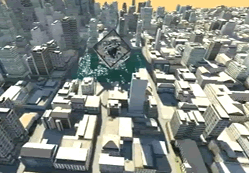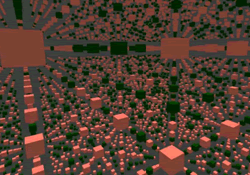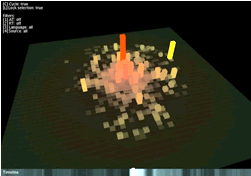The deadline is near for 2012 entry on the new MRes in Advanced Spatial Analysis and Visualisation (ASAV). The course reflects the current state of play in geographic, urban and architectural information systems with an emphasis on visualisation, analysis and modelling. Taught at the Centre for Advanced Spatial Analysis, home of digital urban, it is an innovative and exciting opputunity to study at UCL with a MRes acting as a pathway to a PhD or further career in ASAV.
|
Learn the science of cities and the art of visualisation at UCL’s Centre for Advanced Spatial Analysis from September 2012
Cities have never been more important. More than a half of the world’s population is now urban, presenting new social and environmental questions unique to the 21st Century. As a student at UCL’s Centre for Advanced Spatial Analysis, you will learn to lead the way in collecting, analyzing and visualizing the datasets required to answer the big questions of the next century.
|
 |
 |
At CASA, we have access to data relating to anything from the locations of London’s buses in near real time through to passenger flows on the London Underground network and people’s tweets about urban issues. In addition to our work with this so-called “Big Data”, CASA is also renowned for communicating complex information and ideas to a wide audience of researchers, policy makers and non-specialists alike. The centre comprises a rich mix of researchers ranging from computer scientists, physicists and mathematicians through to geographers, architects and planners. This creates a vibrant and truly interdisciplinary research and teaching environment.
|
|
The CASA MRes in Advanced Spatial Analysis and Visualisation trains students in key techniques in Geographical Information Science, programming visualisations, 3D modeling and mathematical methods of spatial analysis, and with core modules on research methods and academic communication, builds towards a student-led dissertation, incorporating skills from the taught modules. The degree includes a group project which acts as a portfolio for the student’s developing visualisation expertise within a piece of a collaborative coursework.
|
 |
 |
The course contains technical and mathematical content, but there is no prerequisite for students to have programming experience – students can take an optional course introducing them to programming methods in term one if they choose, or learn these skills independently and at their own pace. More important is the desire to challenge yourself – we are looking for applicants from geographical, planning and related social science and humanities backgrounds as well as graduates of more mathematical or computational subjects who are keen to develop their existing skills in a new substantive field.
|
|
To discover more about the course content and how to apply, click here:
Or download our course leaflet here:
|
|
Full-time study applications close 3rd August 2012.
Modular flexible (part-time) study applications close 7thSeptember 2012.
Term begins 24th September 2012.
|
 |
|
|









